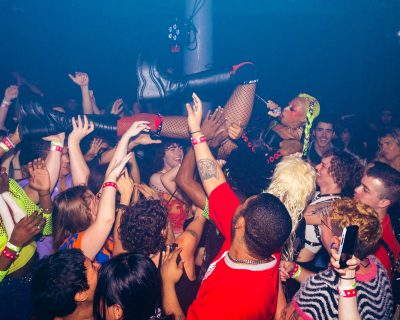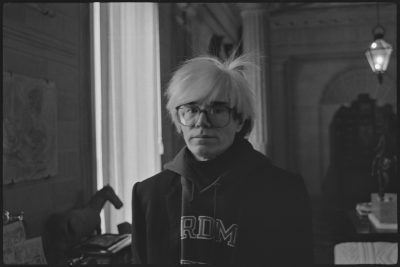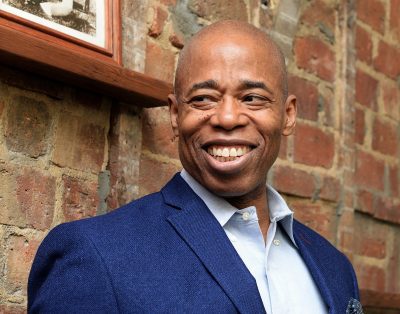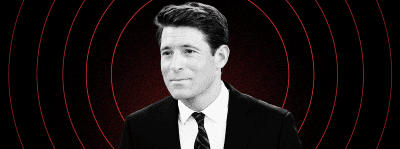Photo by Dada Shikako
You think New York is dead? These artists are betting everything it isn’t
South Williamsburg creative collective The Locker Room has rolled out a residency program urging creatives of all stripes to stick it out
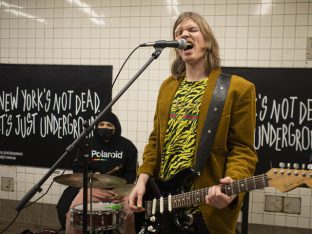
Photo by Mara Catalan
“New York’s not dead. It’s just underground,” reads a poster at the Bowery stop for the J train. You might catch a glimpse of it while waiting for the subway. Or you might happen to glimpse another bit of guerrilla messaging, wheat-pasted across a downtown wall, “No Broadway. Still plenty of character.”
The signs, found all over the city, make up the second phase of a “New York is Dead” campaign by Brooklyn-based creative house The Locker Room, a celebration of the city’s artistic pulse.
“I think part of what makes New York magical is that it’s so hard here,” says Samara Bliss, the founder of the female owned and operated Locker Room. “If you really want to be here, then you make it work.”
And so Bliss is making it work. As is Graham Fortgang, a collaborator on this and other Locker Room projects. In a conversation with Brooklyn Magazine about the “New York is Dead” campaign, Fortgang points out that more people left New York City than any other city in the country.
“Which is scary,” he says. “The campaign is a message to New Yorkers that, of course, [the city] is not dead and we’re going to build back stronger. That’s part of what makes New York, New York.”
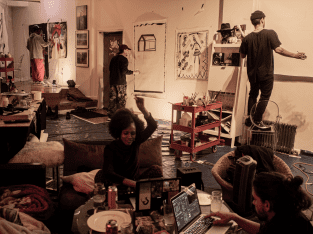

Locker Room in Lockdown (by Mara Catalan)
Doubling down on the city
Quite literally putting their money where their mouths are, Fortgang and Bliss recently launched a month-long residency program called Lockdown at the Locker Room, selecting a group of 10 artists—musicians, painters, photographers and others—to take up residence in the studio for a month and work on their respective crafts.
“Every resident gets a key and has 24-hour access,” says Fortgang, describing the space as an art gallery and recording studio located in a ground floor and basement retail space in South Williamsburg. There are stipends for the artists, one-on-one check-ins, nightly group dinners and collaborative art nights as benefits of the program.
“Sometimes, I feel like I’m at a family dinner with my crazy relatives, with everyone laughing, talking, shouting, dancing and, in the middle of it all, I’m just sitting there holding a paintbrush—equally as crazy,” says painter Antonio Serna Rosellini, one of the resident artists.
Although artistic collectives aren’t new to New York, The Locker Room seems to take it a step further. “Most residencies maintain the isolation aspect of painting. They put you in either a studio or a remote house by yourself with the intent of fostering a good ‘painting environment,’” says Rosellini. “By [bringing] a bunch of different artists and musicians from different backgrounds [together], The Locker Room is providing an endless pool of inspiration and ideas.”
Duefunk, a musician in the program, is producing an album as part of the residency and runs the studio at the space.
“It’s been a great training environment for dealing with the realities of being a professional in entertainment,” he says. “Music and vibes make it easy to party and sometimes work can take the back seat if those artists aren’t careful to lock into their work the right way. The flip side is we, as musicians, need a fun environment and people for inspiration. That’s been an amazing result of all the artists being here and all the fun times and shenanigans.”
After the program wraps on March 7, the staff plans on setting up an exhibition of all the work produced there—most likely some time in May, when the weather (and Covid rates) will have improved.
“We want to make sure that as many people as possible are able to see the work,” says Fortgang. “Our goal is to create opportunities for the artists so we want to maximize their [chances] of selling the work because they are depending on that for income and it’s what they’re spending a month of their lives doing.”
The entire endeavor is a bit of a gamble. Not only did Bliss invest all of her savings to set up the collective, but the staff is currently working solely off donations and—perhaps most importantly—the entire concept is banking on the return of the cultural pulse of the city. After all, if people aren’t in town, who will come to the exhibit? Who is going to buy any of the art?
According to Bliss, this challenging time might actually be stoking creativity. “People feel this spark of inspiration with everything happening in the world,” she says. “I think they are also inspired by this void in the city.”
Fortgang predicts that when things begin to return to some kind of “normal” that New York will feel like Berlin after the fall of the wall.
“The [city] became known as the capital of freedom of expression and all these [new clubs opened] and became landmarks,” he says. “It’s not going to be easy but I think we’re going to see that here.”
Phase one a success
Although currently focusing on the residency program, the duo is quick to note that it was the first phase of their “New York is Dead” campaign that drew a lot of attention—across more than 15 media outlets in the United States and internationally..
New Yorkers who fled the germy city for seemingly greener pastures, like upstate or Miami or even Los Angeles—where the weather isn’t as frigid and Covid-related restrictions are less stringent—were targeted by The Locker Room with a guerrilla billboard campaign.
Since January, the Locker Room has been plastering messaging across South Beach in Miami and Silver Lake in Los Angeles—where the majority of New York expatriates have uprooted—that read “New York is dead: Don’t come back.”
It was only a little tongue-in-cheek.
“When the city opens back up, people are going to dance like they’ve never danced before,” says Fortgang. “They’re going to want to be out and meet the person next to them at the bar and want to look at the person walking down the street and want to support the small restaurant or bar they used to walk by and there is going to be this [impetus to be] grateful for all of these things.”
You might also like 

















